Highly Reflective Silver-Enhanced Coating with High Adhesion and Sulfurization Resistance for Telescopes
Abstract
:1. Introduction
2. Materials and Methods
2.1. Experimental Setup
2.2. Protected, Enhanced Silver Coating Design
2.3. Sulfurization Test of the Ag-Coated Samples
2.4. Adhesion Test of the Ag-Enhanced Multilayer
2.5. Reflection Measurement of the Two Telescope Systems
2.6. Surface Roughness of Ag-Enhanced Telescope Mirror
3. Results, Analysis, and Applications
3.1. The Optical Thin Film Design of the Ag-Enhanced Multilayer
3.2. The Reflectivity of the Ag-Coating Affected by Sulfurization Test
3.3. Adhesion Test of the Ag-Enhanced Multilayer
3.4. Optical Reflectivity Comparison of the Ag-Enhanced and Pure Al Coatings

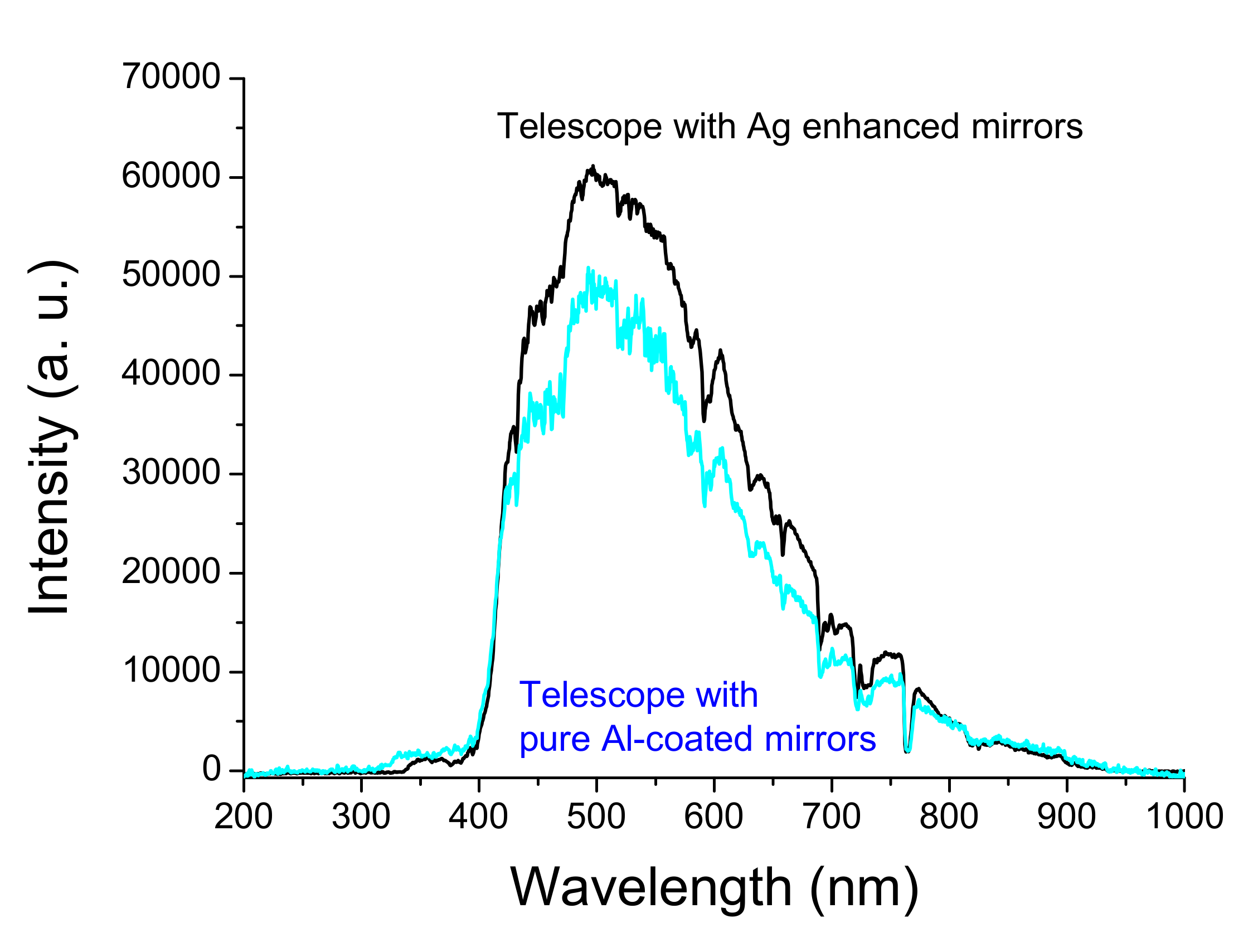
4. Discussion
5. Conclusions
Author Contributions
Funding
Institutional Review Board Statement
Informed Consent Statement
Data Availability Statement
Acknowledgments
Conflicts of Interest
References
- Garoli, D.; Rodriguez, D.; Marcos, L.V.; Larruquert, J.I.; Corso, A.J.; Proietti Zaccaria, R.; Pelizzo, M.G. Mirrors for space telescopes: Degradation issues. Appl. Sci. 2020, 10, 7538. [Google Scholar] [CrossRef]
- Wu, H.Y.; Walker, D.; Yu, G. Fundamental steps toward next-generation intelligent automatic process in a faster and cost-effective chain for processing optical surfaces. Opt. Express 2019, 27, 21856–21871. [Google Scholar] [CrossRef]
- Walker, D.; Wu, H.Y.; Yu, G.; Li, H.; Zhang, W.; Lu, C. Insight into aspheric misfit with hard tools: Mapping the island of low mid-spatial frequencies. Appl. Opt. 2017, 56, 9925–9931. [Google Scholar] [CrossRef]
- Kim, S.; Kim, S.W. The optical system development and alignment for the Korsch type telescope. In Optical Manufacturing and Testing XIII; SPIE: Bellingham, WA, USA, 2020; pp. 71–77. [Google Scholar]
- Bolcar, M.R.; Balasubramanian, K.; Crooke, J.; Feinberg, L.; Quijada, M.; Rauscher, B.J.; Redding, D.; Rioux, N.; Shaklan, S.; Stahl, H.P.; et al. Technology gap assessment for a future large-aperture ultraviolet-optical-infrared space telescope. J. Astron. Telesc. Instrum. Syst. 2016, 2, 041209. [Google Scholar] [CrossRef]
- Smith, W.J. Modern Optical Engineering, 4th ed.; McGraw-Hill Press: New York, NY, USA, 2008. [Google Scholar]
- Fischer, R.F.; Tadic-Galeb, B.; Yoder, P.R., Jr. Optical System Design, 2nd ed.; SPIE: Bellingham, WA, USA, 2008. [Google Scholar]
- Wu, H.Y. Robotic Processes to Accelerate Large Optic Fabrication. Ph.D. Thesis, University College London, London, UK, 2016. [Google Scholar]
- Hass, G. Reflectance and preparation of front-surface mirrors for use at various angles of incidence from the ultraviolet to the far infrared. JOSA 1982, 72, 27–39. [Google Scholar] [CrossRef]
- Bheemireddy, K.R.; Gopinathan, M.; Pant, J.; Omar, A.; Kumar, B.; Uddin, W.; Kumar, N. The first aluminum coating of the 3700mm primary mirror of the Devasthal Optical Telescope. In Ground-Based and Airborne Telescopes VI; SPIE: Bellingham, WA, USA, 2016; pp. 1475–1483. [Google Scholar]
- Schotsaert, J.; Adans, S.; Bellet, P.; Wiame, H.; Belov, I.; Gottlieb, C.; Weis, H.; Novis, Y.; Sansgasset, P.; Heinz, V. The coating plant for the segments of the primary mirror of the Extremely Large Telescope (ELT) in Chile. In Advances in Optical and Mechanical Technologies for Telescopes and Instrumentation IV; SPIE: Bellingham, WA, USA, 2020; pp. 199–208. [Google Scholar]
- Phillips, A.C.; Miller, J.; Brown, W.E.; Hilyard, D.; DuPraw, B.; Wallace, V.; Cowley, D. Progress toward high-performance reflective and anti-reflection coatings for astronomical optics. In Advanced Optical and Mechanical Technologies in Telescopes and Instrumentation; SPIE: Bellingham, WA, USA, 2008; pp. 1767–1776. [Google Scholar]
- Phillips, A.C.; Brown, W.E.; DuPraw, B.; Hilyard, D.F.; Cowley, D.J. Progress toward high-performance astronomical coatings. In Modern Technologies in Space- and Ground-Based Telescopes and Instrumentation; SPIE: Bellingham, WA, USA, 2010; pp. 1403–1409. [Google Scholar]
- Graedel, T.E. Corrosion mechanisms for silver exposed to the atmosphere. J. Electrochem. Soc. 1992, 139, 1963. [Google Scholar] [CrossRef]
- Burge, D.K.; Bennett, H.E.; Ashley, E.J. Effect of atmospheric exposure on the infrared reflectance of silvered mirrors with and without protective coatings. Appl. Opt. 1973, 12, 42. [Google Scholar] [CrossRef]
- Ehrenreich, H.; Philipp, H.R. Optical properties of Ag and Cu. Phys. Rev. 1962, 128, 1622–1629. [Google Scholar] [CrossRef]
- Feller, A.; Krishnappa, N.; Pleier, O.; Hirzberger, J.; Jobst, P.J.; Schürmann, M. Reflectivity, Polarization Properties, and Durability of Metallic Mirror Coatings for the European Solar Telescope. Modern Technologies in Space- and Ground-Based Telescopes and Instrumentation II; SPIE: Bellingham, WA, USA, 2012; Volume 8450. [Google Scholar]
- Lee, D.; Lee, J.; Chen, C.C.; Lin, A. Evaluation of the anti-corrosion capacity for various electronics by way of accelerated corrosion testing platform. In 2016 11th International Microsystems, Packaging, Assembly and Circuits Technology Conference (IMPACT); IEEE: New York, NY, USA, 2016; pp. 159–163. [Google Scholar]
- Hsu, J.C.; Lee, C.C. Single- and dual-ion-beam sputter deposition of titanium oxide films. Appl. Opt. 1998, 37, 1171–1176. [Google Scholar] [CrossRef]
- Hsu, J.C.; Wang, P.W.; Lee, C.C. X-ray photoelectron spectroscopy study of thin TiO2 films cosputtered with Al. Appl. Opt. 2006, 45, 4303–4309. [Google Scholar] [CrossRef]
- Hsu, J.C.; Lee, C.C.; Kuo, C.C.; Chen, S.H.; Wu, J.Y.; Chen, H.L.; Wei, C.Y. Coating uniformity improvement for a dense-wavelength-division-multiplexing filter by use of the etching effect. Appl. Opt. 2005, 44, 4402–4407. [Google Scholar] [CrossRef]
- Hsu, J.C. Analysis of the thickness uniformity improved by using wire masks for coating optical bandpass filters. Appl. Opt. 2014, 53, 1474–1480. [Google Scholar] [CrossRef]
- Xu, X.; Tang, Z.; Shao, J.; Fan, Z. The study on the interface adhesion comparison of the MgF2, Al2O3, SiO2 and Ag thin films. Appl. Surf. Sci. 2005, 245, 11–15. [Google Scholar] [CrossRef]
- Phillips, A.C.; Miller, J.S.; Bolte, M.; DuPraw, B.; Radovan, M.; Cowley, D. Progress in UCO’s search for silver-based telescope mirror coatings. In Modern Technologies in Space- and Ground-Based Telescopes and Instrumentation II; SPIE: Bellingham, WA, USA, 2012. [Google Scholar]
- Shen, L.S.; Wu, H.Y.; Hsiao, L.J.; Shih, C.H.; Hsu, J.C. LED light improved by an optical filter to visible solar-like light with high color rendering. Coatings 2021, 11, 763. [Google Scholar] [CrossRef]
- Atanassov, G.; Turlo, J.; Fu, J.K.; Dai, Y.S. Mechanical, optical and structural properties of TiO2 and MgF2 thin films deposited by plasma ion assisted deposition. Thin Solid Films 1999, 342, 83–92. [Google Scholar] [CrossRef]
- Lee, C.C.; Hsu, J.C.; Wong, D.H. The characteristics of some metallic oxides prepared in high vacuum by ion beam sputtering. Appl. Surf. Sci. 2001, 171, 151–156. [Google Scholar] [CrossRef]
- Hsu, J.C.; Lee, C.C.; Chen, H.L.; Kuo, C.C.; Wang, P.W. Investigation of thin TiO2 films cosputtered with Si species. Appl. Surf. Sci. 2009, 255, 4852–4858. [Google Scholar] [CrossRef]
- Wang, H.; Qi, L. Controlled synthesis of Ag2S, Ag2Se, and Ag nanofibers by using a general sacrificial template and their application in electronic device fabrication. Adv. Funct. Mater. 2008, 18, 1249–1256. [Google Scholar] [CrossRef]
- Sadovnikov, S.I.; Kuznetsova, Y.V.; Rempel, A.A. Ag2S silver sulfide nanoparticles and colloidal solutions: Synthesis and properties. Nano-Struct. Nano-Objects 2016, 7, 81–91. [Google Scholar] [CrossRef]
- Fischer, P.; Jansen, M.; Zahurak, S.M. Electrochemical syntheses of binary silver oxides. In Inorganic Syntheses: Nonmolecular Solids. Inorganic Syntheses; Murphy, D.W., Interrante, L.V., Eds.; Wiley & Sons: Hoboken, NJ, USA, 1995; Volume 30, pp. 50–55. [Google Scholar]
- Al-Sarraj, A.; Saoud, K.M.; Elmel, A.; Mansour, S.; Haik, Y. Optoelectronic properties of highly porous silver oxide thin film. SN Appl. Sci. 2021, 3, 15. [Google Scholar] [CrossRef]
- Kader, A.A.; Zagory, D.; Kerbel, E.L.; Wang, C.Y. Modified atmosphere packaging of fruits and vegetables. Crit. Rev. Food Sci. 1989, 28, 1–30. [Google Scholar] [CrossRef]
- Lee, C.C.; Hsu, J.C.; Wong, D.H. Low loss niobium oxides film deposited by ion beam sputter deposition. Opt. Quant. Electron. 2000, 32, 327–337. [Google Scholar] [CrossRef]
- Kingery, W.D.; Bowen, H.K.; Uhlmann, D.R. Introduction to Ceramics; John Wiley & Sons: Hoboken, NJ, USA, 1976; Volume 17, ISBN 978-0-471-47860-7. [Google Scholar]
- Bennett, H.E.; Porteus, J. Relation between surface roughness and specular reflectance at normal incidence. JOSA 1961, 51, 123–129. [Google Scholar] [CrossRef]
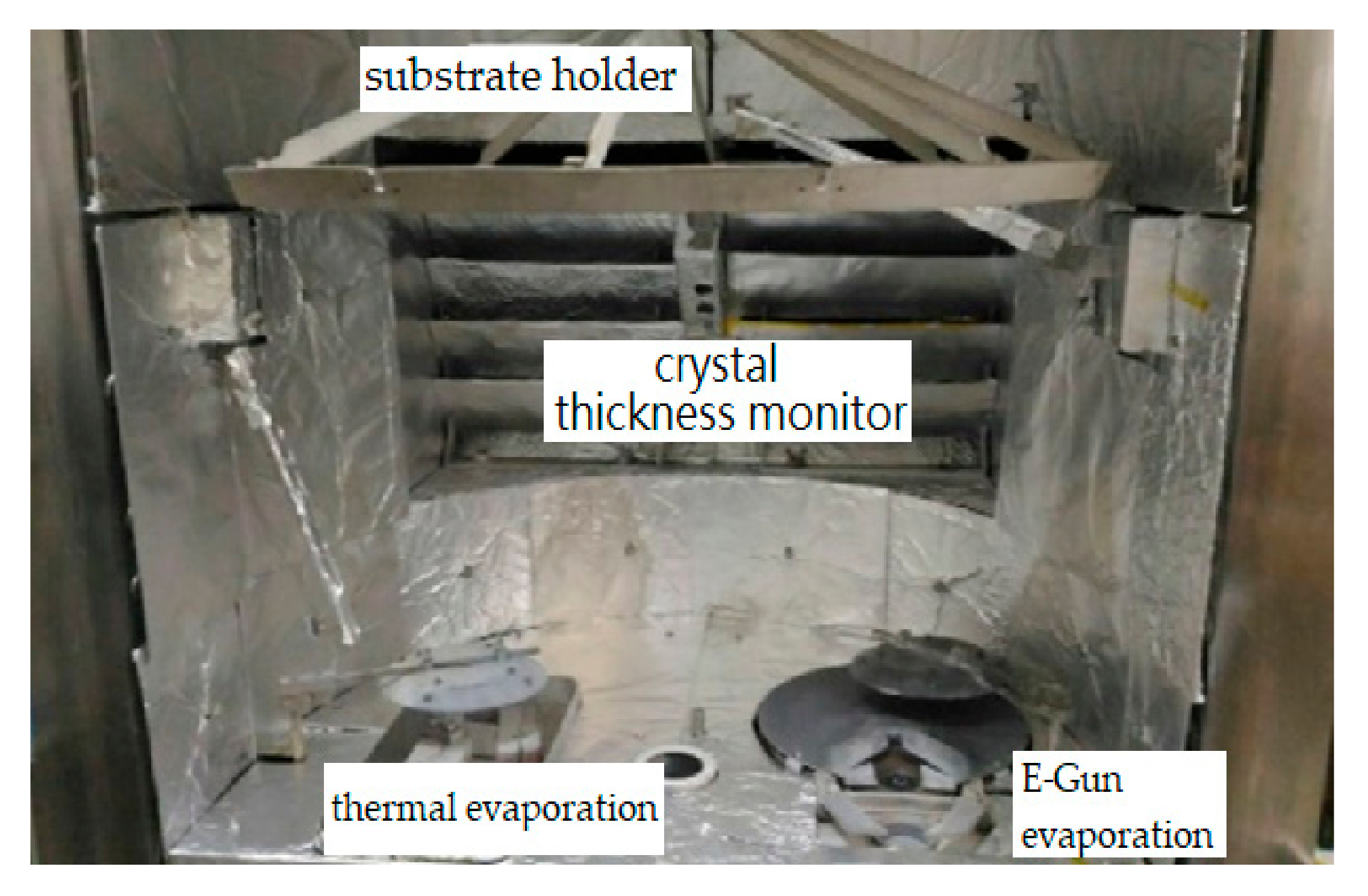


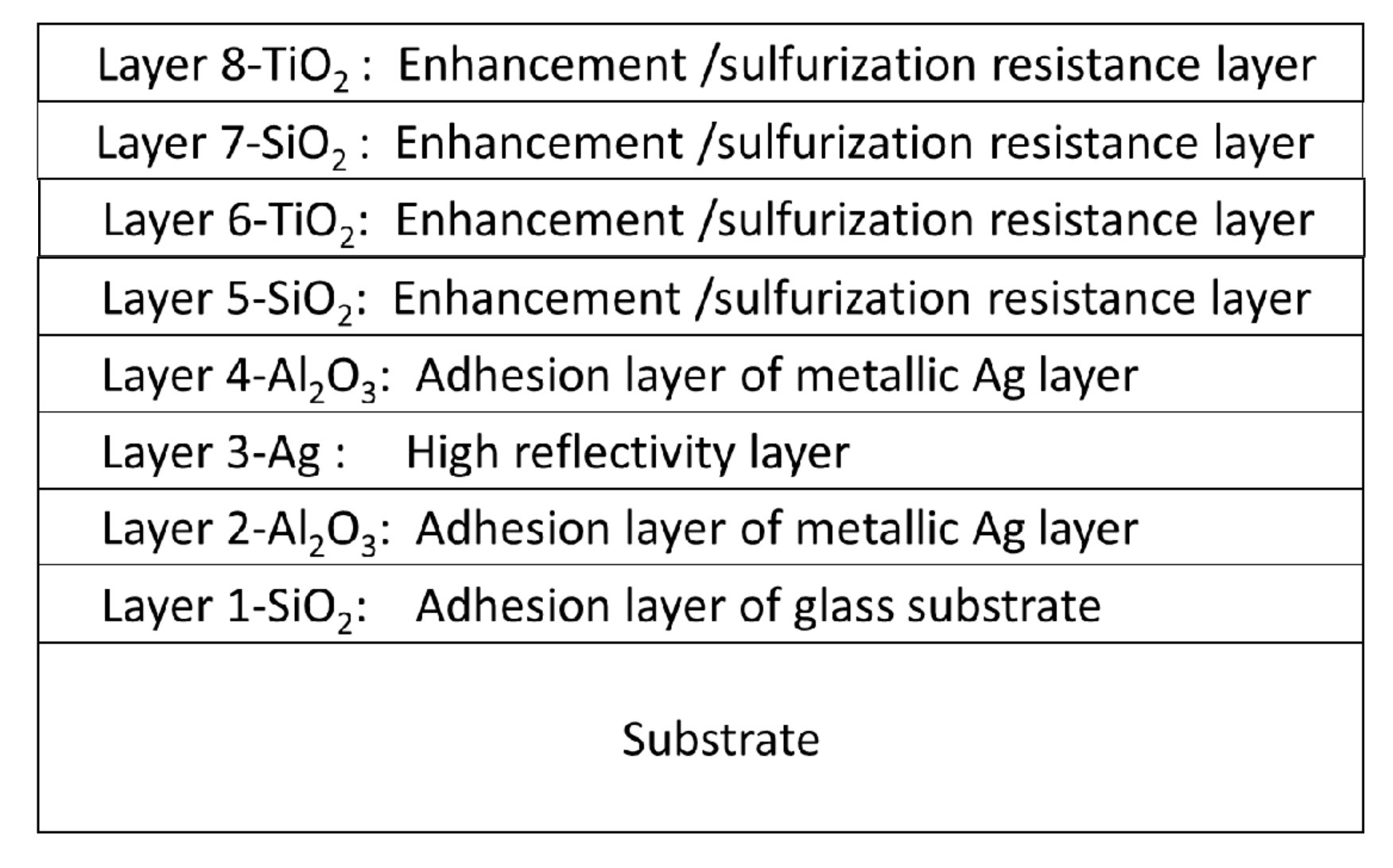
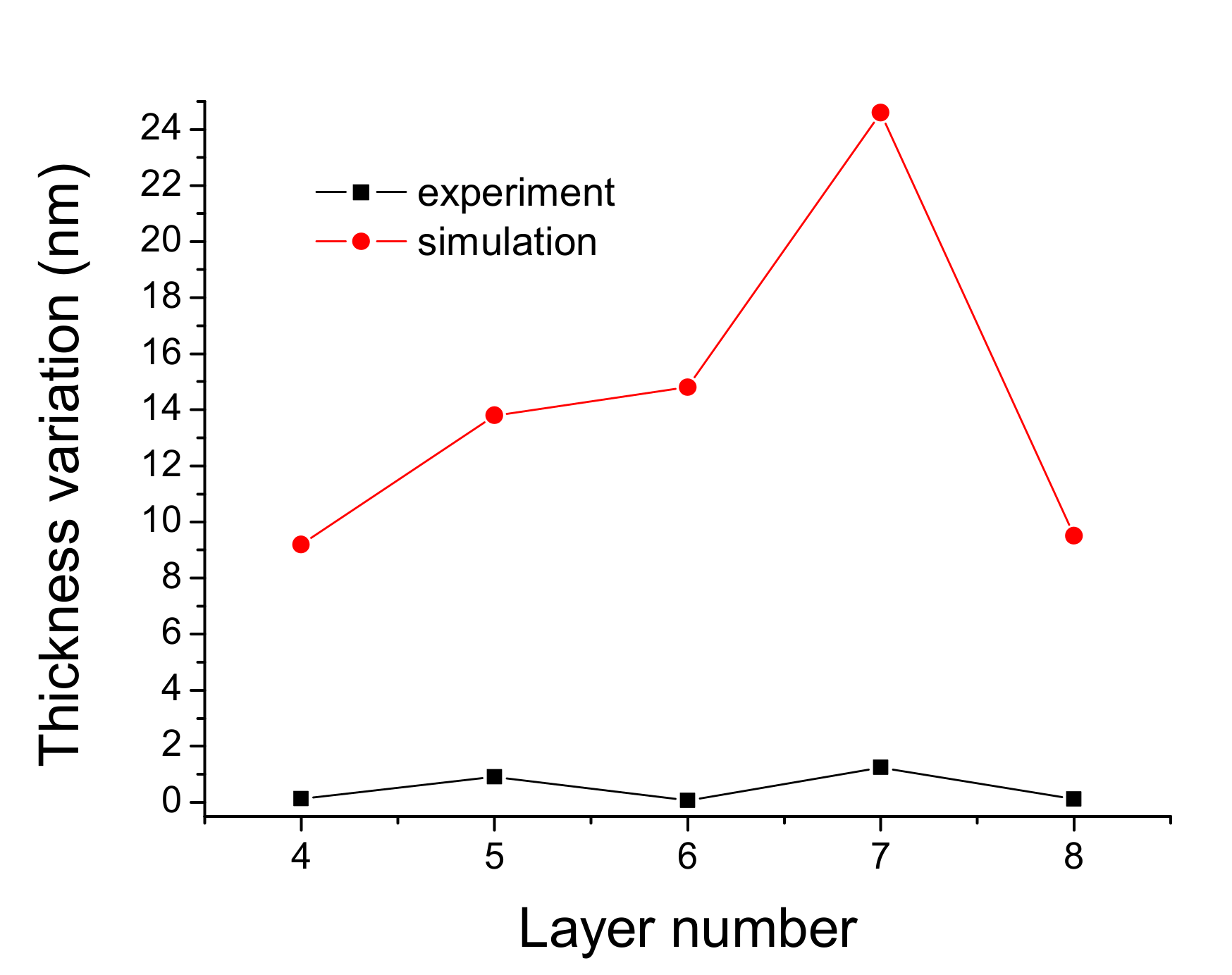
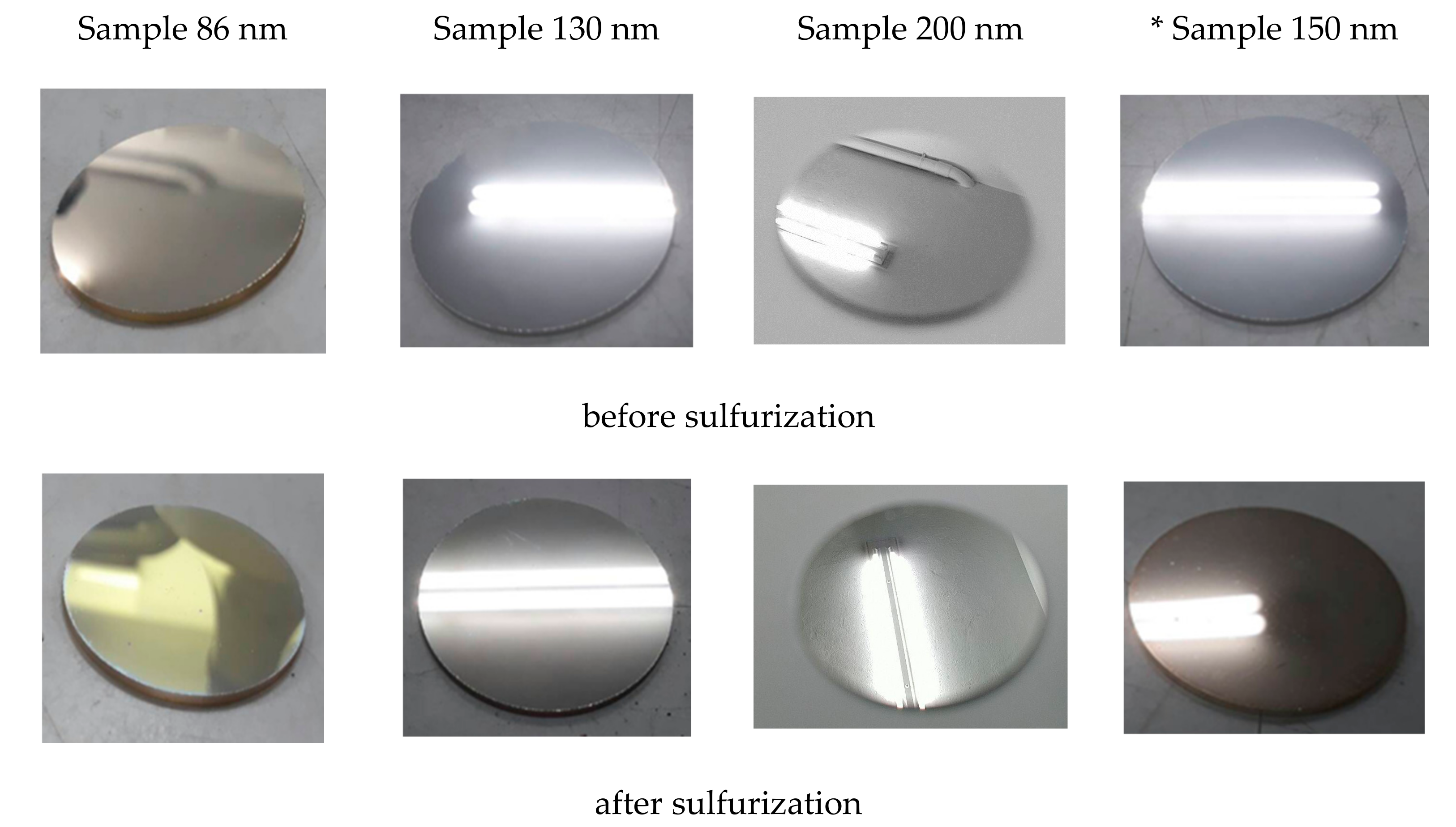
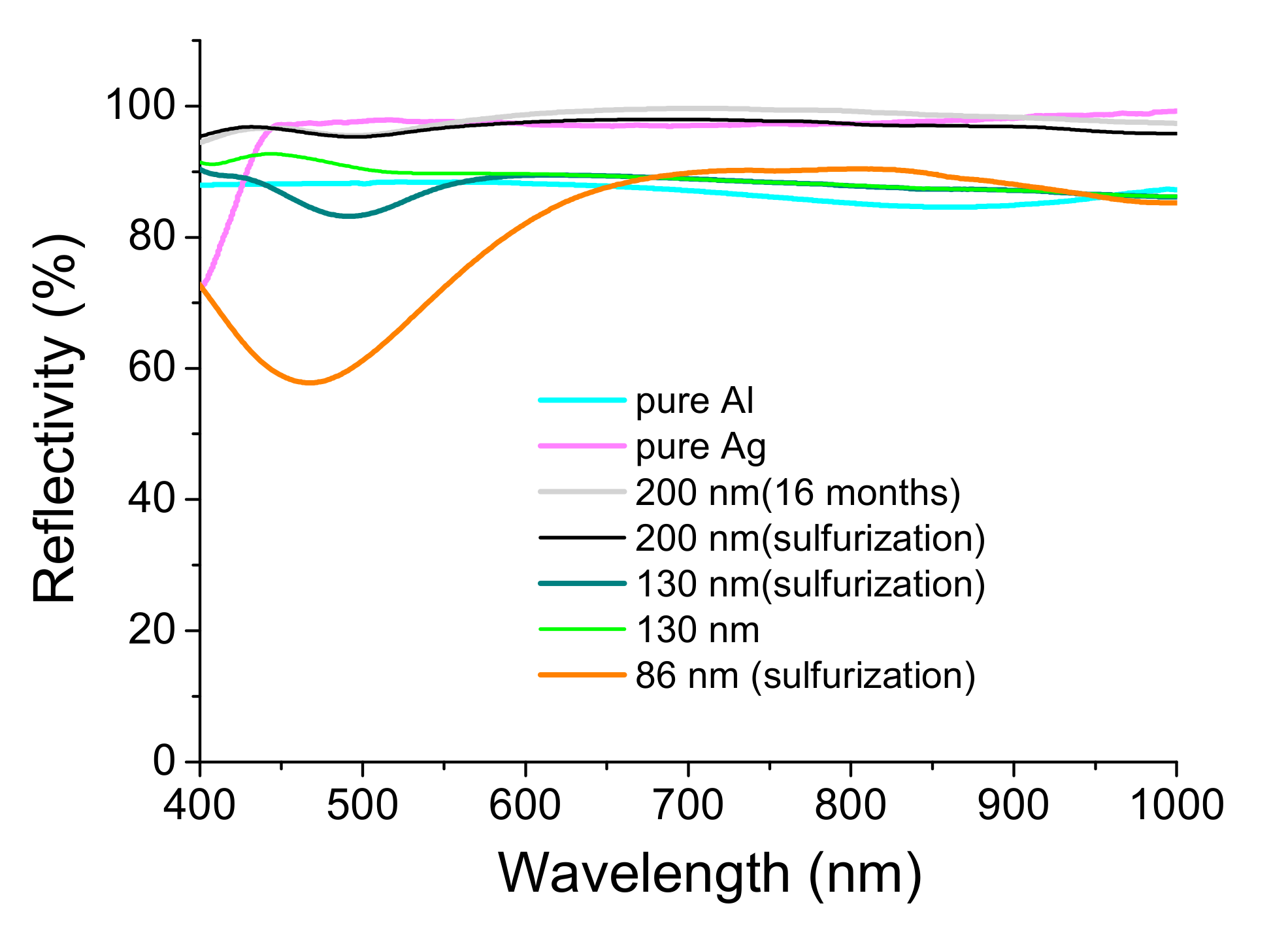
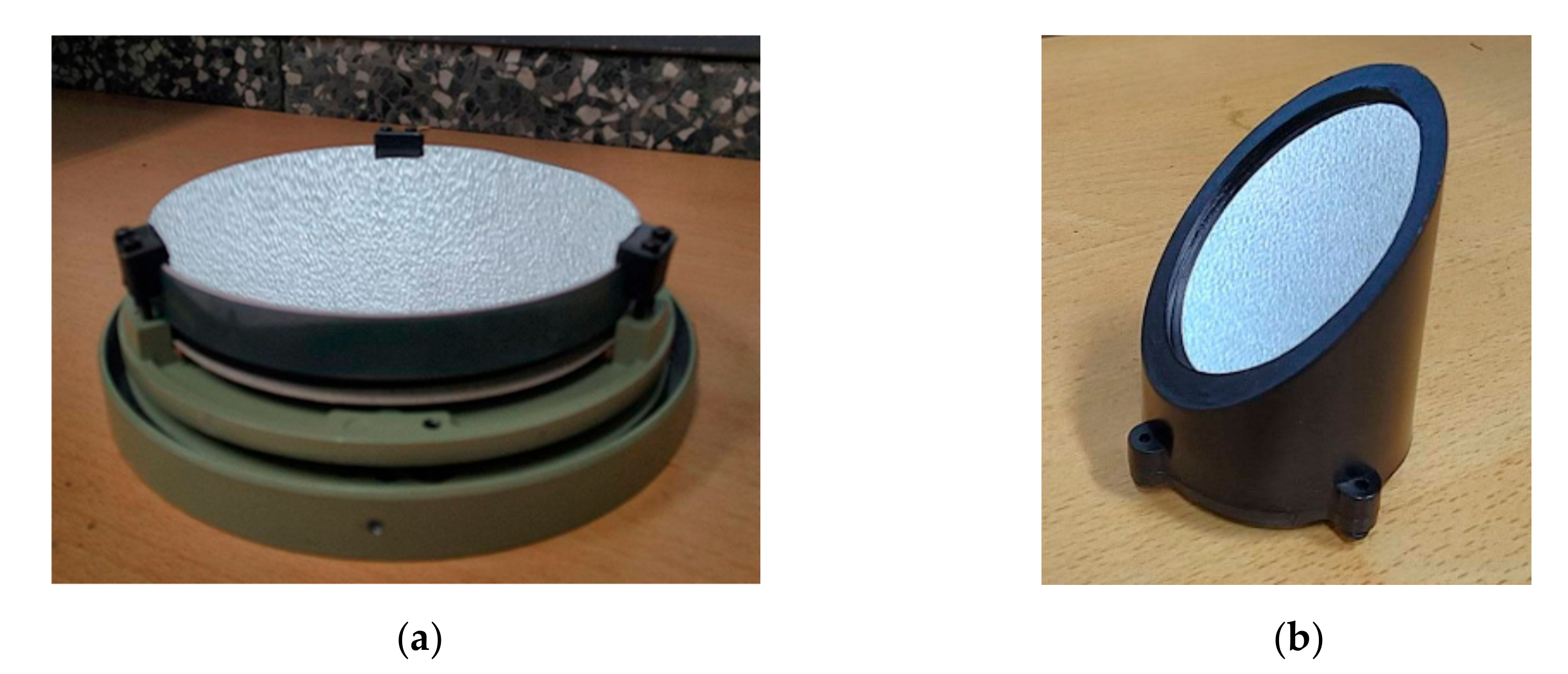
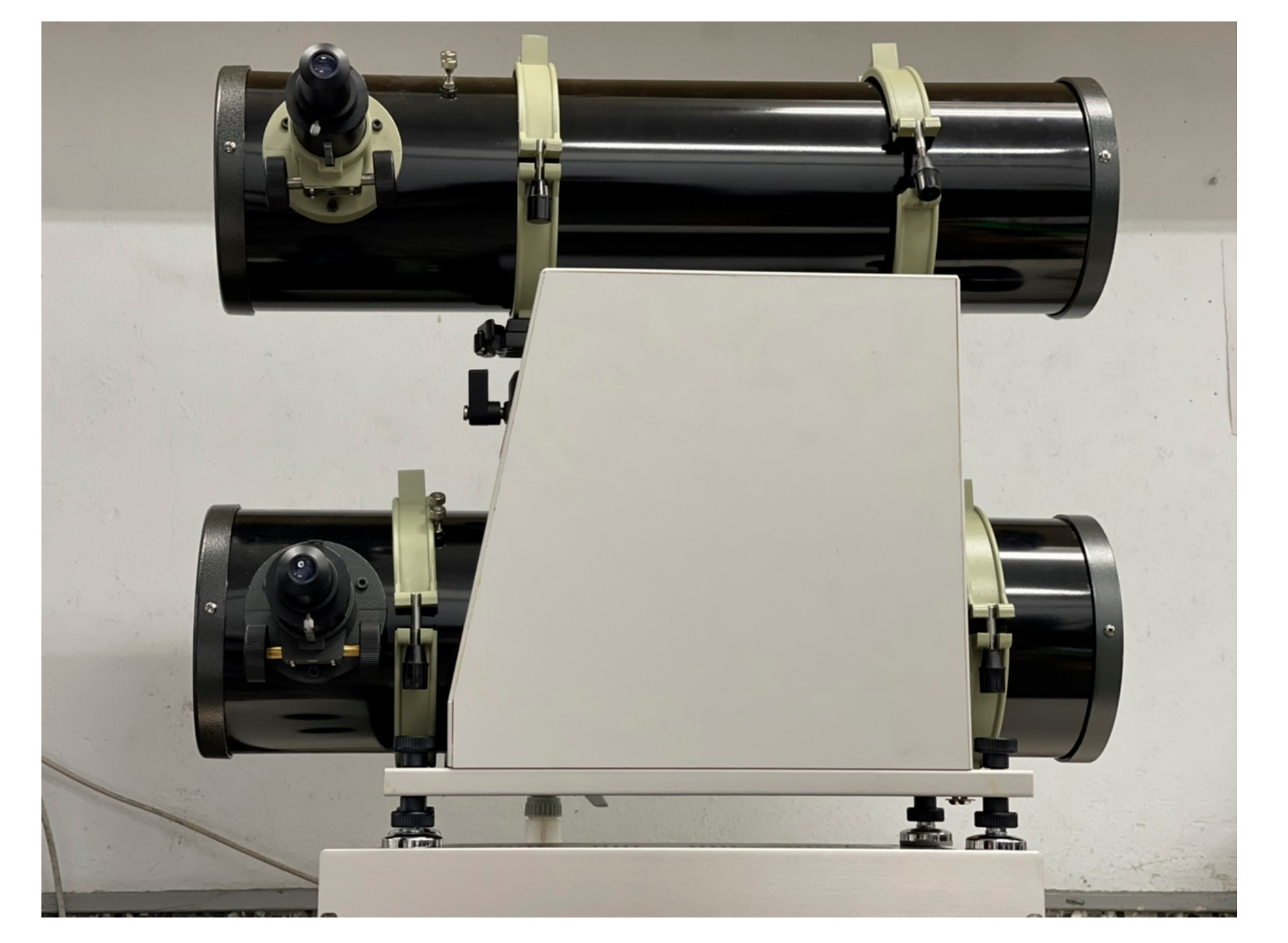
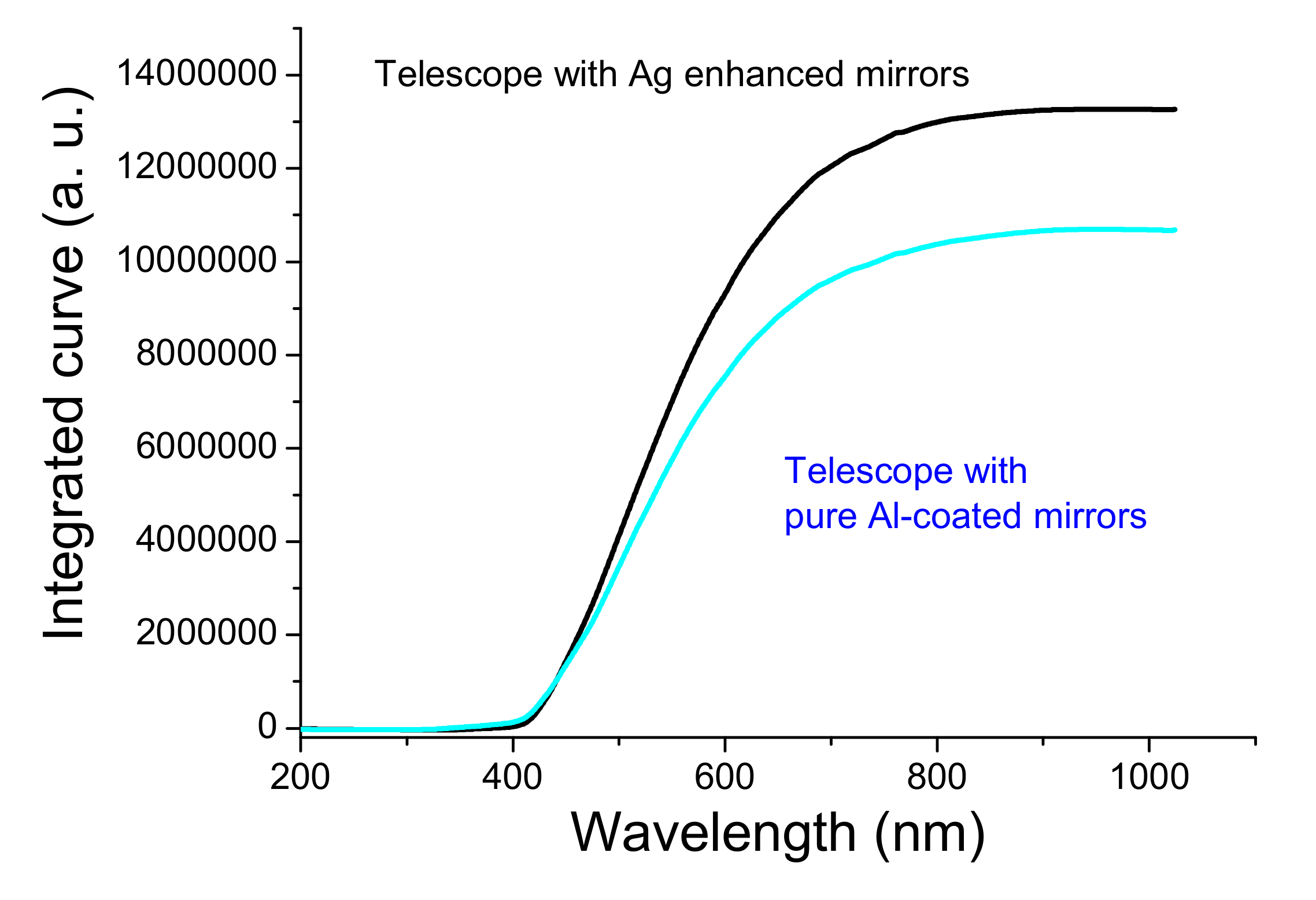
| Layer | Material | Thickness (nm) | Pressure (Pa) | Deposition Rate (nm/s) | IAD | Temperature (°C) |
|---|---|---|---|---|---|---|
| 1 | SiO2 | 46.8 | 1.4 × 10−2 | 0.22 | Vb:119.4 V Ib:2.76 A | 50 |
| 2 | Al2O3 | 20 | 2.5 × 10−2 | 0.3 | Vb:119.4 V Ib:3.01 A | 50 |
| 3 | Ag * | 86, 130, 200 | 5.5 × 10−4 | 1 | no | 60 |
| 4 | Al2O3 | 5 | 2.5 × 10−2 | 0.16 | no | 60 |
| 5 | SiO2 | 54.1 | 1.4 × 10−2 | 0.22 | Vb:119.4 V Ib:2.76 A | 80 |
| 6 | TiO2 | 49.5 | 1.0 × 10−2 | 0.09 | Vb:119.5 V Ib:2.13 A | 105 |
| 7 | SiO2 | 91.2 | 1.4 × 10−2 | 0.22 | Vb:119.4 V Ib:2.76 A | 100 |
| 8 | TiO2 | 12.2 | 1.0 × 10−2 | 0.9 | Vb:119.5 V Ib:2.13 A | 115 |
| Thickness (nm) | Admittance | Reflectivity (%) | Phase |
|---|---|---|---|
| 86 | 0.060-i 2.86 | 97.43 | 141.5 |
| 130 | 0.050-i 2.87 | 97.83 | 141.6 |
| 200 | 0.05-i 2.87 | 97.85 | 141.9 |
Publisher’s Note: MDPI stays neutral with regard to jurisdictional claims in published maps and institutional affiliations. |
© 2022 by the authors. Licensee MDPI, Basel, Switzerland. This article is an open access article distributed under the terms and conditions of the Creative Commons Attribution (CC BY) license (https://creativecommons.org/licenses/by/4.0/).
Share and Cite
Wu, H.-Y.; Huang, S.-R.; Shih, C.-H.; Hsiao, L.-J.; Chen, H.-W.; Cheng, M.-C.; Hsu, J.-C. Highly Reflective Silver-Enhanced Coating with High Adhesion and Sulfurization Resistance for Telescopes. Nanomaterials 2022, 12, 1054. https://doi.org/10.3390/nano12071054
Wu H-Y, Huang S-R, Shih C-H, Hsiao L-J, Chen H-W, Cheng M-C, Hsu J-C. Highly Reflective Silver-Enhanced Coating with High Adhesion and Sulfurization Resistance for Telescopes. Nanomaterials. 2022; 12(7):1054. https://doi.org/10.3390/nano12071054
Chicago/Turabian StyleWu, Hsing-Yu, Shao-Rong Huang, Chih-Hsuan Shih, Li-Jen Hsiao, Hong-Wei Chen, Ming-Chung Cheng, and Jin-Cherng Hsu. 2022. "Highly Reflective Silver-Enhanced Coating with High Adhesion and Sulfurization Resistance for Telescopes" Nanomaterials 12, no. 7: 1054. https://doi.org/10.3390/nano12071054
APA StyleWu, H.-Y., Huang, S.-R., Shih, C.-H., Hsiao, L.-J., Chen, H.-W., Cheng, M.-C., & Hsu, J.-C. (2022). Highly Reflective Silver-Enhanced Coating with High Adhesion and Sulfurization Resistance for Telescopes. Nanomaterials, 12(7), 1054. https://doi.org/10.3390/nano12071054







